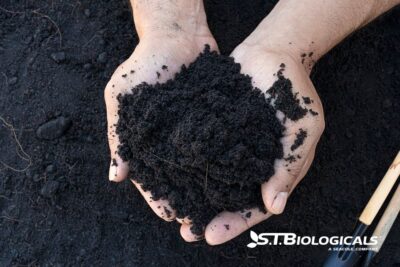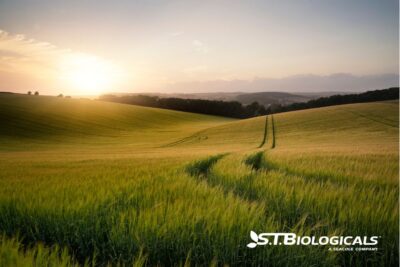In regenerative agriculture, every decision is a dialogue with the land. Silage, often seen as a utilitarian feed solution, is ripe for reexamination. What if, instead of a fallback during forage shortages, silage became a strategic expression of stewardship?
Silage Is More Than Just Feed
At ST Biologicals, we believe regenerative farming isn’t just about inputs, it’s about intention. Silage, when approached with care and ecological awareness, becomes a tool for resilience, nutrient cycling, and long-term soil vitality.
Regenerative agriculture can ensure your farmland is healthy for future generations so you pass a healthier, higher-yielding farm down to your kids and grandkids.
The Ecological Benefits of Silage
Overgrazing is one of the most common threats to soil health. By providing a reliable feed source during shoulder seasons, silage allows pastures to rest and regenerate. This aligns with the regenerative principle of minimizing disturbance and maximizing ground cover, both critical for microbial life and carbon retention.
According to a 2024 study in the journal Sustainability, mixed silage systems can improve forage conservation and reduce nutrient leaching during dry seasons. This supports both animal health and soil integrity. Silage is a soil protector.
Silage is also a microbial conversion mechanism. Silage fermentation is a microbial process, one that mirrors the microbial life in healthy soils. When you manage silage with the same care you give to cash crops, you’re reinforcing the idea that biology drives fertility.
Cattle thrive on consistency. Silage provides a stable, palatable, and digestible feed source that supports rumen function and reduces metabolic stress. This isn’t just about productivity. It’s about understanding the nutritional needs of your livestock. Well-fed animals are calmer, more predictable, and easier to manage in rotational systems. Silage helps reduce the pressure to graze marginal areas. Leaving those areas to wild vegetation reduces erosion and the spread of invasive species.
Silage is not only nutritious, it also has good long-term storage potential if processed and stored properly. This makes it a cornerstone of ethical livestock management. Silage becomes a behavioral nudge toward regenerative grazing systems.
Silage Is Part of a Climate Resilience Strategy for Your Farm
When cattle eat silage, that consistent feed quality reduces the amount of methane spikes on your operation. When you stabilize the diet of your livestock, you support more efficient digestion and reduce enteric emissions. You are negating the key argument against livestock (especially cattle) in activist discussions that paint cattle as the main culprit in greenhouse gas emissions.
As well as making for less cow burps and farts, silage systems that integrate legumes or cover crops sequester carbon while reducing your reliance on synthetic inputs. As our climate becomes more erratic, silage acts as a buffer. It allows you to decouple livestock health from rainfall patterns. You can preserve both animal health and pasture longevity during dry spells.
Silage Is an Investment, Not a Cost
Silage allows you to grow your own feed, reducing reliance on volatile commodity markets. When you pair silage with regenerative practices like no-till and microbial inoculants, it becomes part of a closed-loop system that builds fertility rather than depleting it.
There may be upfront labor and infrastructure costs with silage, but the long-term benefits far outweigh the costs. You will have reduced vet bills, improved weight gain, and pasture longevity. These all translate into higher economic returns with lower input costs.
Contact our team at ST Biologicals to go over a silage plan for your acreage. Every farm is unique, and so is the farm plan for optimized soil health, plant vigor, and agricultural profit. We’re here to help you succeed. When soil speaks, we listen.

